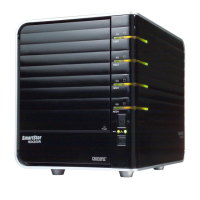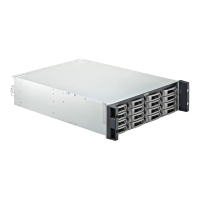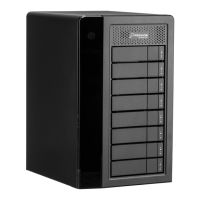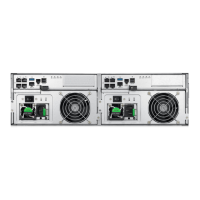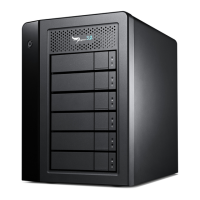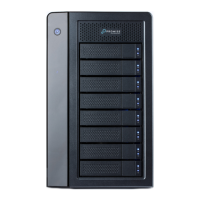Chapter 5: PASM
231
Managing RAID Volumes & File System
This category includes the following topics:
• Viewing RAID Volume Status (page 231)
• Viewing Disk Drive Information (page 232)
• Creating a RAID Volume (page 233)
• Designating a Spare Drive (page 234)
• Migrating a RAID Volume (page 234)
• Deleting a RAID Volume (page 235)
• Viewing the File System Status (page 236)
• Viewing an External USB Drive or Memory Stick (page 237)
• Formatting an External USB Drive or Memory Stick (page 238)
• Viewing the iSCSI Status (page 238)
• Creating the iSCSI Volume (page 240)
• Modifying the iSCSI Volume (page 241)
Viewing RAID Volume Status
RAID status refers to the disk drives on your SmartStor and how they are
arranged into a RAID Volume.
To view the status of your RAID Volume:
1. Click the Administration topic and choose the RAID & File System icon to
expand the Tree. (A)
2. In the Tree, click the RAID Management icon. (B)
The RAID Status tab displays the current RAID system and its status: (C)
• RAID Name – The name of your RAID, automatically assigned when it
was created
• RAID Level – RAID 0, 1, 5, or 10, specified when it was created
• Capacity – Data capacity of the RAID Volume in GB
• RAID Status – Functional is normal. Critical means a disk drive has
failed. Offline means you cannot access your data.
Critical and offline RAIDs require you to take corrective action. See
“Replacing a Failed Disk Drive” on page 307.
• Action Status – Idle is normal. Rebuilding means the RAID Volume is
being rebuilt after a disk drive failure. Migrating means the RAID Volume
is adding a disk drive or changing RAID levels.
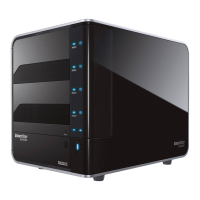
